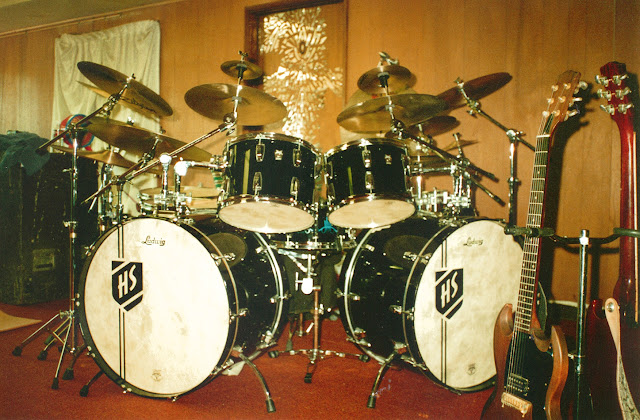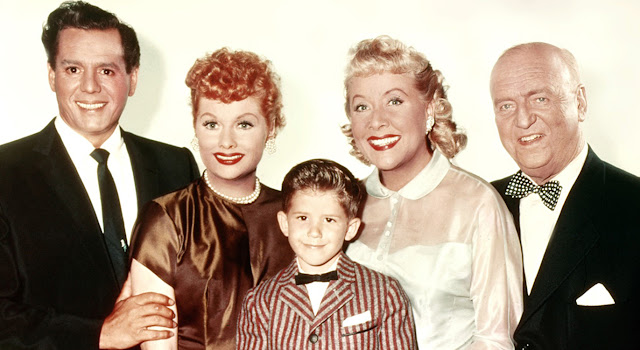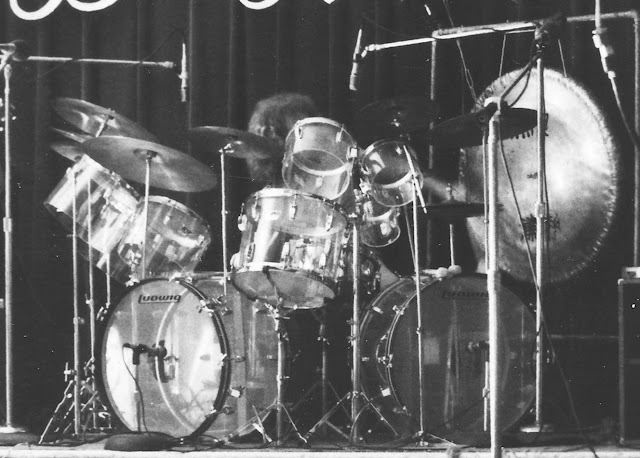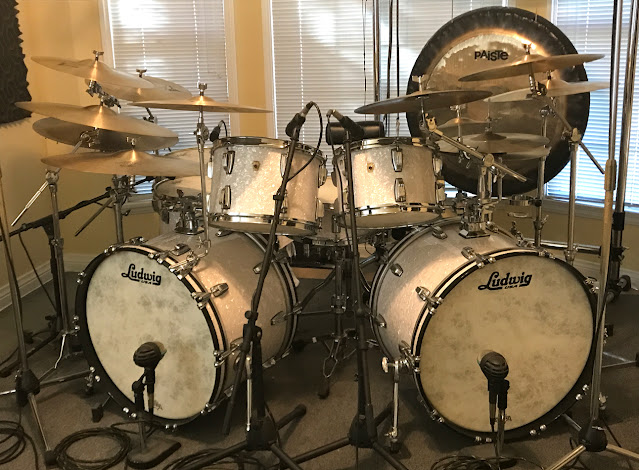My Drumsets, Part 5: Ludwig Classic (1990 – 2013)
In spite of having been so rapturously in love with drums since the age of eight, compared with many drummers who have reached my (much more advanced) current age I've actually owned relatively little drum equipment throughout my life. This post is Part 5 in a multi-part rundown of it all. (Here are links to Parts 1, 2, 3 and 4.)
Bigger Drums: Ludwig Classic series (Sable Black urethane finish)
Configuration: Two bass drums, two small toms, two floor toms, snare drum
• Two 26” x 16” bass drums, 13” x 9” and 14” x 10” small toms, 16” x 16” and 18” x 16” floor toms, 14” x 7” Valley Drum Shop custom snare drum (custom painted)
• Pearl hardware and stands; DW5000 bass-drum pedals
• Cymbal setup continually evolving but always exclusively Zildjian
When I began playing live gigs in bands with Greg Segal — first in Cold Sky and then in Dog Neutral (best band name EVER!) — I began to have a similar problem with my new Gretsch drumset to the one I had 17 years earlier with my old psychedelic-painted “Expand-O-Kent” drumset (see Part 2): Its sound wasn’t cutting through very well on stage. The Gretsch drum shells were thin and resonant, producing a full, warm and woody sound, but because thin shells absorb more of a drumhead's vibrations than thicker shells do, that full, warm and woody sound doesn't project well through loud stage volume. Even though the drums were mic'd everywhere we played, when things got cooking on stage (and Dog Neutral could really build up a head of steam during an hour-long live set) the drums' sound was getting lost to me and the rest of the band.
In 1990 I solved the problem by putting together a Ludwig Classic kit with larger drums that had heavy 3/8”-thick 6-ply (maple and poplar) shells. (By 1990 Ludwig had worked out its quality issues at their North Carolina factory and was back to producing great-sounding, well-made instruments.) When I designed this drumset I rectified the mistake I made in 1973 when I ordered my Vistalite drumset and specified 26"-diameter bass drums, as well as larger-diameter small toms and floor toms. The drum shop I dealt with (Valley Drum Shop) made their own custom snare drums that were popular with studio players (Ringo was even photographed using one) so I ordered a 7" deep model in black lacquer to match the rest of the set.
Although I prefer wrapped finishes because they protect the drums better than wood finishes (and they look sexier under stage lights), I chose the Sable Black urethane finish because Ludwig's measly selection of wrap finishes in 1990 was depressingly lame. Pearl cymbal stands replaced my Yamaha stands, which proved unable to stand up to repeated setups and tear-downs (tubes easily dented and rivets broke). I got a new pair of DW5000 bass drum pedals with the Ludwig drums (the DW's design is based on the old Camco pedal, which I had used for years with my Vistalite set). The DWs were solid, but lacked the adjustments I had become used to with my Rogers pedals.
I kept my Gretsch drumset, anticipating its use in a future home studio, but financial issues forced me to sell it in the mid-1990s. I included the Rogers pedals with it — in hindsight I should've kept the Rogers pedals and included my newer DW5000s with it.
This Ludwig Classic drumset is absolutely thunderous sounding, and it was more than a match for any ensemble I used it with on stage. Although it can have an extremely powerful sound when played hard, the drums are also surprisingly responsive to softer playing. Their sound is bright and full, with a very strong attack. I've used these drums on 14 different CDs: two by Dog Neutral, ten by Jugalbandi (a duet format I played with Greg Segal between 1993 and 2003) and my own two solo CDs, The Teller-Ulam Configuration and Breakfast at Liggett's, and they record quite well, although it's nearly impossible for microphones to accurately capture their true power.
The author playing the Ludwig Classic drumset live with Jugalbandi
in May of 1999. This was Jugalbandi's only live appearance (so far).
I wound up playing this Ludwig drumset for 23 years — a much longer time than I played any other drumset I’ve ever owned. During that time I put it through a lot of changes:
• I soon replaced the arena-rock sized 13"x 12" and 15"x 12" small toms I originally got with the drumset with more traditional 13"x 9" and 14"x 10" sizes that played better (quicker response) and allowed for more musically-useful tuning intervals between all four toms.
• I originally used Remo clear Emperor drumheads on this drumset when I was playing in Dog Neutral, since I needed the extra punch provided by that 2-ply model. When I stopped playing live gigs I switched to Remo Renaissance drumheads in search of a warmer sound, but ultimately found them too 'boingy' sounding. When Remo introduced the Fiberskyn 3 model in the mid 1990s I fitted the Ludwigs with them and have stuck with that model drumhead ever since, due to its warm, calfskin-like sound (and look).
• I had the snare drum custom painted by a buddy who did vehicle painting and pinstriping for a living (it looks great).
• In the mid-'90s I added a Ludwig bronze-shelled 13"x 3" auxiliary piccolo snare drum that provided a nice contrasting pitch from the 7"-deep main snare drum. (I sold it in 2002 to help finance equipment for Yard Dog 1, my first home studio.)
• For a short time in the late '90s I increased my cymbal setup until at one point the drumset was festooned with 14 cymbals (12 + hi-hats) — the most I've ever used at one time on a drumset. (The photo at the top of this post is from this period.) By 2003 my cymbal setup had shrunk to a more manageable 11 total (9 + hi-hats).
I still have these drums stored in the closet in the drum room of my current home studio (Yard Dog 2), and if I ever find myself in a very loud band I wouldn’t hesitate to haul them out and use them again. (They would sound absolutely awesome in a Led Zeppelin tribute band.) I wish I had this drumset when I had been playing drums professionally between 1972 and 1977 — it would have been the perfect instrument for me back then, but Ludwig didn’t even start offering this heavy 6-ply shell configuration until 1976.
The only real problem with using the Classics again is that the complete drumset is difficult to transport. When I bought the drumset I was towing a trailer behind my 1986 RX-7, then I upgraded to an SUV so I always had plenty of transport room. But since 2009 I've driven conventional sedans, and these drums are so large (especially the 26" x 16" bass drums) that the complete set won't fit in that type of vehicle. So when it was time to consider getting a new drumset I looked into drums that I could more easily get from one place to another.
-Hyam R. Sosnow








Comments
Post a Comment